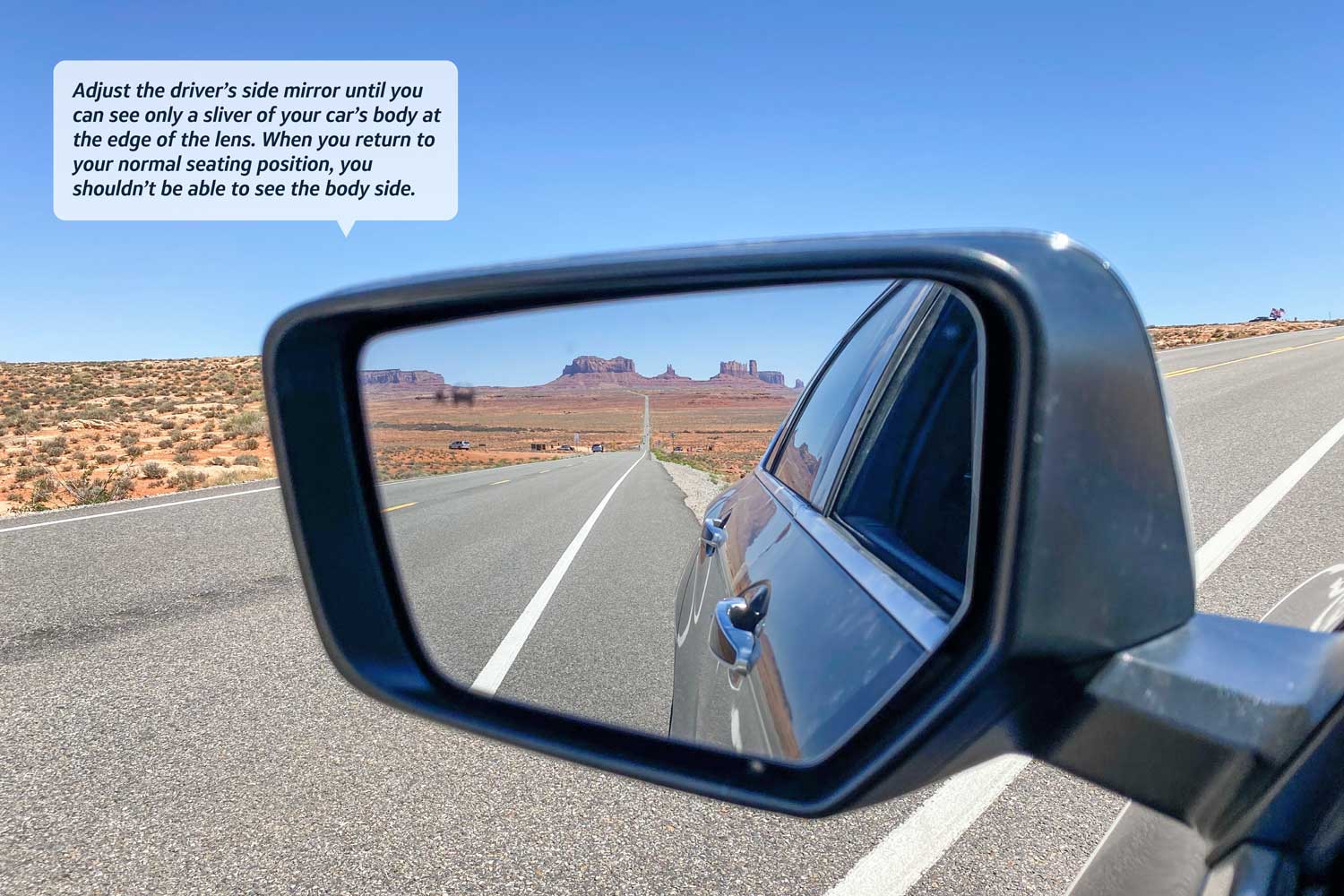How to Adjust Your Car's Mirrors
You likely missed this blind-spot-eliminating trick in driver’s ed.
 Capital One
Capital One
Article QuickTakes:
You were probably taught to set your side mirrors so that you could see a portion of the car’s body on the inside edge. Forget that. The side of your car isn’t going anywhere, and you don’t need to see it while driving. What you do need to see is if a vehicle is lurking next to your rear quarter panel, and there’s a way to do it. Try these four steps to minimize or even eliminate those pesky no-vision zones known as blind spots.
The Panoramic View Method of Mirror Adjustment
Before we begin, these instructions assume you have an interior rearview mirror, two side-view mirrors, and a view out the back of your vehicle (e.g., you’re not towing a trailer or driving a box truck). With that out of the way, let’s get adjusting.
Position your seat as you want it, then adjust the interior rearview mirror to maximize your rearward vision. Pro tip: lower any rear-seat headrests that aren’t in use. Check your owner’s manual to determine if your rear headrests fold down in addition to lowering. Every inch of visibility matters.
Park your car in an area where you can see a target object, like a vehicle or light post, at one edge of your interior rearview mirror.
Compare the views you have of the target in the rear- and side-view mirrors. Adjust the side-view mirror outward until you can barely see the object.
Adjust the other side mirror the same way, repositioning the vehicle first if necessary so that the object behind you is just visible at the other edge of the rearview mirror.
You should now have a wider view of what’s behind you with minimal overlap from one mirror to the next. Go for a short drive to get used to your new setup and make any adjustments.
A Faster Way to Achieve the Same Result
The above technique is a good way to familiarize yourself with how wider side mirror positioning improves your rearward field of view, but it can be tedious if you share a car with another driver and frequently have to reset your mirrors. Once you’re comfortable with this new way of seeing the world behind you, it’s quicker to adjust the mirrors without relying on a target object behind your car. The following technique can be used wherever your car happens to be parked when you slide into the driver’s seat.
Sit in your natural driving position and adjust the interior mirror to maximize your rearward view.
Lean toward the left side of the car until your head is nearly touching the driver’s side window.
Adjust the driver’s side mirror until you can see only a sliver of your car’s body at the edge of the lens. When you return to your normal seating position, you shouldn’t be able to see the body side.
Repeat the process for the right mirror, leaning toward the center of the car.
Tech Solutions to Seeing Behind You
By law, all 2018 and newer passenger vehicles sold in the U.S. must have a rearview camera. Automakers such as Cadillac, Infiniti, and Jeep now offer video rearview mirrors that display an image from the rear-facing camera in place of the reflection. These digital mirrors provide a wider view of what’s behind you, and they can’t be blocked by rear-seat passengers or a mountain of luggage. Underneath the video feed, there’s still a mirror there. It’s a good idea to turn the system off and adjust your mirrors using the above method in case the projection fails for some reason.
Next are powered side mirrors that dip in reverse, available on certain vehicles like the Range Rover Velar and BMW i4. The feature works like this: whenever you put the car in reverse, the side mirrors automatically move to a lowered, preset position, making it easier for you to see parking lines or curbs. If you choose to use this function, go through the adjustment routine with the vehicle in park or neutral, and then shift to reverse to set your backing-up positions. You can usually turn this feature off in the vehicle’s settings if it bothers you.



